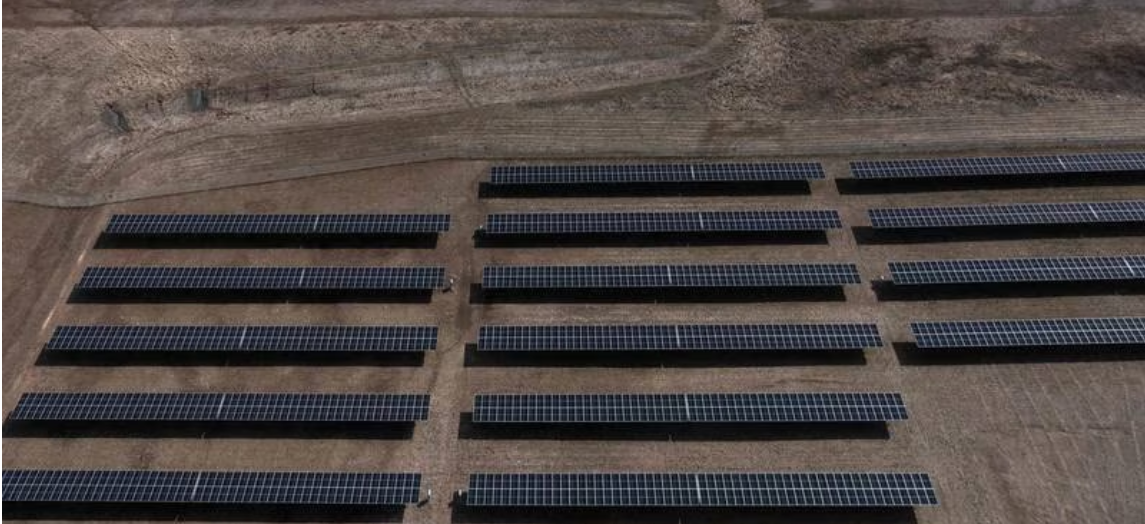
IRA could stimulate $11 trillion of total infrastructure investments by 2050
The US Inflation Reduction Act (IRA) will spur about $3 trillion of investment in renewable energy technology, according to Goldman Sachs.
It could double the amount of energy produced by the US shale revolution more than a decade ago, the investment bank said in a report.
“Shale remains a valuable asset, but in our view, the US can no longer rely on it to carry this key cost competitive advantage into the next decade: it needs another energy revolution to maintain its energy cost leadership,” said Michele Della Vigna, Goldman Sachs’ head of natural resources research.
The IRA, enacted last year, offers a series of tax incentives on wind, solar, hydropower and other renewables, as well as a push towards electric vehicle ownership.
The law will usher in the “next energy revolution” and is expected to provide $1.2 trillion of incentives by 2032, Goldman Sachs said.
By 2032, there will be a total investment opportunity of $2.9 trillion available for the “re-invention” of the American energy system, which equates to an average annual investment of $290 billion, it added.
The IRA could stimulate $11 trillion of total infrastructure investments by 2050, the bank said.
It “biggest” impact is likely to be in the transportation sector, mainly through modified tax credits for new electric and clean commercial vehicles, which will lead to reduced costs for cleaner alternatives, Goldman Sachs said.
However, government spending under the IRA will depend on the number of companies that will move their operations back to the US, the report said.
“They are weighing the benefits of tax credits against the potential increased manufacturing costs compared to the current locations of these components.”
Another big uncertainty is the share of EVs that will qualify for tax incentives, Goldman Sachs said.
Investing in clean power is set to be key as electricity generation was responsible for nearly a third of US carbon emissions in 2021.
The country’s power demand is expected to increase 2.5 times by 2050, compared with 2021, requiring a renewable power investment of $6.6 trillion, according to Goldman Sachs.
This includes building renewable energy plants, upgrading power grids and expanding energy storage at utility-scale.
Renewable energy sources will grow by about 9 per cent annually through to 2050, representing 44 per cent of total generation capacity by 2030 and 80 per cent by 2050, the investment bank estimated.
Meanwhile, US hydrocarbon energy will “gradually decline”, depending on the pace of energy transition and the carbon content of each fuel, Goldman Sachs said.
“Natural gas will likely diminish after 2030, but consumption is expected to be more resilient than oil and gas.”
Driven by rising liquefied natural gas capacity, US natural gas exports will nearly double to 20 billion cubic feet a day by 2030 from 11 billion cubic feet a day currently as domestic consumption falls, the report said.
As the EV market share increases, oil demand for transportation will decline significantly after 2030, said Goldman Sachs, which expects EVs to make up 75 per cent of the market by 2040.
“One EV replacing one internal-combustion engine car in the total fleet reduces, on average, oil consumption by 11 barrels per annum.”
Electrification and the clean energy push will increase demand for natural resources such as aluminium, copper, lithium and nickel, needed for the power network, charging infrastructure, EVs, and battery manufacturing.
“For battery metals such as lithium, nickel and cobalt, we expect demand growth by several folds,” said Mr Della Vigna.
“The demand profiles for nickel, cobalt and lithium will, to a major extent, depend on the mix of EV battery types adopted.”

